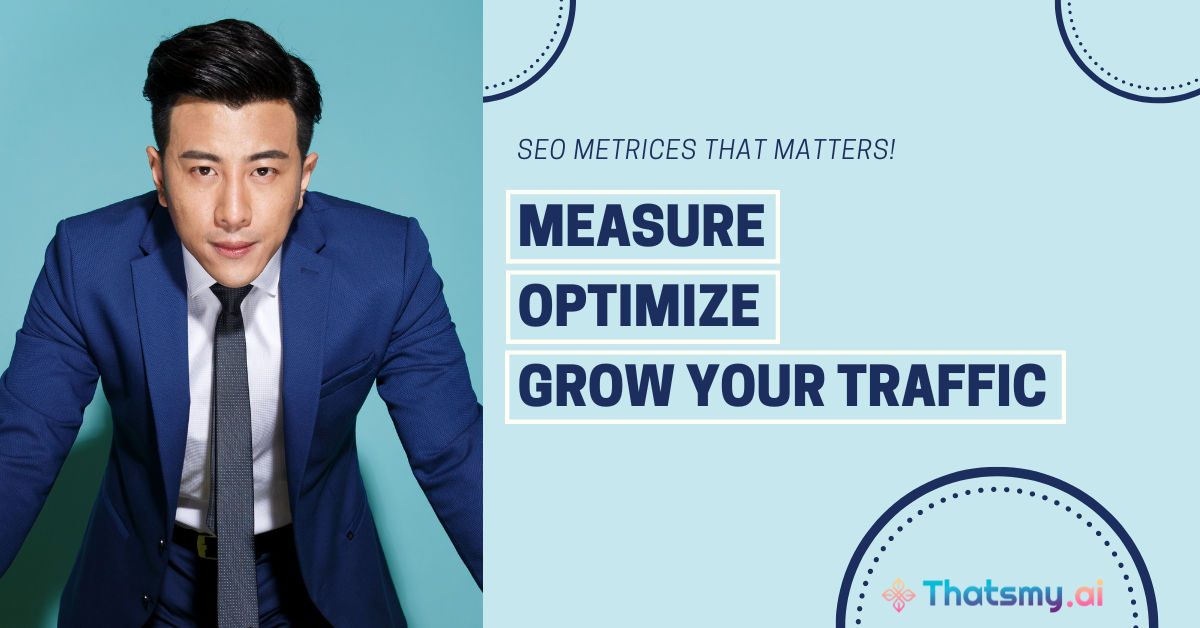Unlock the secrets to skyrocketing your website’s performance! This blog highlights the must-know strategies to turn your SEO game into a traffic-generating machine. Discover how tools like Google Analytics and Search Console can reveal the story behind your site's performance and learn how cutting-edge AI tools like SurferSEO and SEO.AI can supercharge your optimization efforts. From mastering A/B testing to uncovering user behavior with heatmaps, this blog is packed with actionable tips to boost rankings, engage users, and grow your traffic like never before. Don't just guess what works—measure, optimize, and dominate!

Hey there, SEO enthusiast! Ever feel like you're putting in tons of effort but not sure if it’s paying off?
Tracking and measuring your SEO success is like having a map on a road trip—it shows you where you’re going and how far you’ve come.
In this guide, we’ll dive into the essential tools and strategies to help you monitor, analyze, and optimize your SEO efforts. Ready to turn those numbers into actionable insights?
Let’s get started!
Imagine you’re baking a cake without a recipe. You mix a little of this and a pinch of that, hoping it turns out delicious.
That’s what SEO feels like without proper tracking—you need to know what’s working and what’s not.
Google offers some fantastic tools to keep track of your SEO journey:
Google Analytics: This is your go-to tool for monitoring organic traffic, bounce rates, and conversions. It’s like having a GPS for your website.
Google Search Console: This tool helps you understand how Google views your site. Track your performance, see which queries bring traffic, and identify any issues.
By regularly checking these metrics, you can see which strategies are baking a delicious SEO cake and which need a bit more sugar.
While Google’s tools are fantastic, sometimes you need a bit more spice in your SEO soup.
This is where the AI-powered tools shine the most—these are your secret ingredients to a successful strategy.
These tools have worked wonders for me, and I’m excited to share them with you:
SurferSEO: Analyzes over 500 factors to help you optimize your content. It’s like having a personal SEO chef fine-tuning your recipe.
Outranking: Provides comprehensive reports on keyword performance and content optimization. Perfect for understanding how your content is doing and where to improve.
SEO.AI: Offers user-friendly reports and in-depth analysis. It’s great for making data-driven decisions to boost your search engine rankings.
Looking at your data regularly is like checking the weather forecast before heading out. It helps you plan and adjust as needed.
If something isn’t working, don’t worry—SEO is all about continuous improvement:
Regular Analysis: Make a habit of reviewing your data weekly or monthly.
Tweak and Test: If a strategy isn’t delivering results, tweak it and test again. Remember, SEO is a marathon, not a sprint.
A/B testing is one of my favorite strategies—it’s like a taste test for your website.
By comparing two versions of a page, you can see which one performs better.
Here’s how you can start A/B testing on your site:
Test Headlines: Try different headlines to see which one attracts more clicks.
Compare Images: Use different images and analyze engagement.
Optimize Layouts: Test various page layouts to find the most user-friendly design.
Heatmaps are like having X-ray vision for your website. They show you where visitors are clicking and scrolling, helping you understand user behavior.
Implement heatmaps to see:
Hotspots: Identify the most clicked areas on your site.
User Pathways: Understand how users navigate through your pages.
Engagement Zones: See which parts of your content keep visitors engaged.
Phew, that was a wild ride! We’ve covered a lot, so let’s recap:
Track and Measure: Use Google Analytics and Search Console to monitor your SEO success.
Use AI Tools: Enhance your strategy with tools like SurferSEO, Outranking, and SEO.AI.
Regular Analysis: Regularly review your data and make adjustments.
A/B Testing: Test different elements to find what works best.
Heatmaps: Understand user behavior with heatmaps.
Conduct keyword research and choose relevant keywords.
Optimize your content, add meta tags, and have structured URLs.
Ensure your site is mobile-friendly and fast.
Build high-quality backlinks and engage on social media.
Monitor your performance and adjust your strategies as needed.
And there you have it!
This guide should give you a comprehensive understanding of SEO analytics and tools. Remember, SEO is a journey, not a destination. Keep learning, stay curious, and watch your website climb the ranks.
Be sure to check out the best AI SEO tools that can make you 10X faster with best results!
Sign up to gain AI-driven insights and tools that set you apart from the crowd. Become the leader you’re meant to be.
Start My AI Journey
ThatsMyAI
3 August 2024